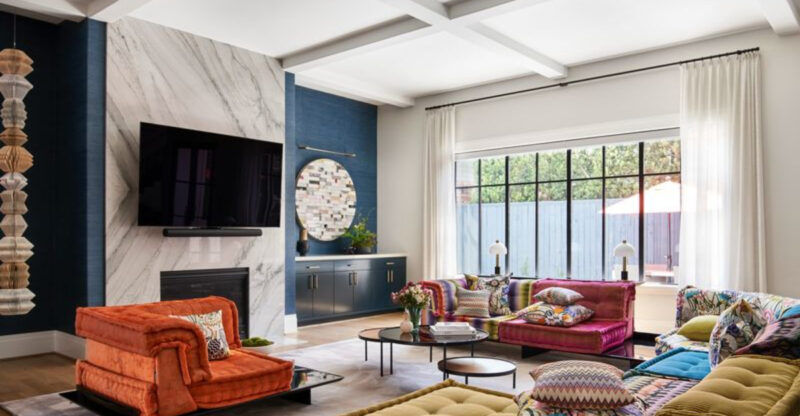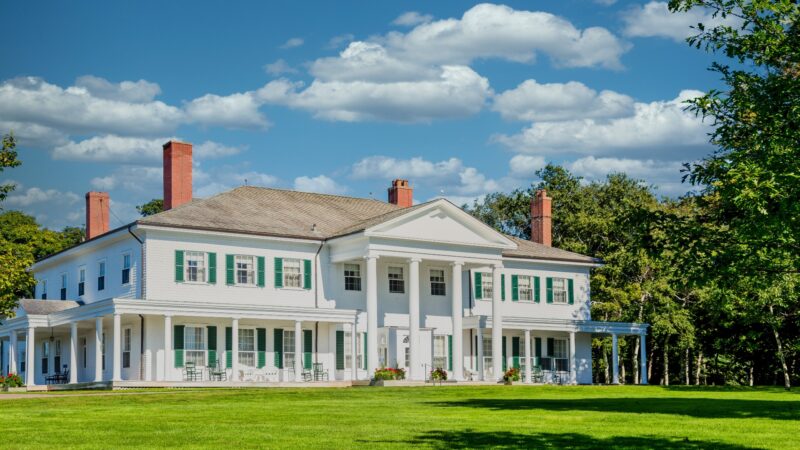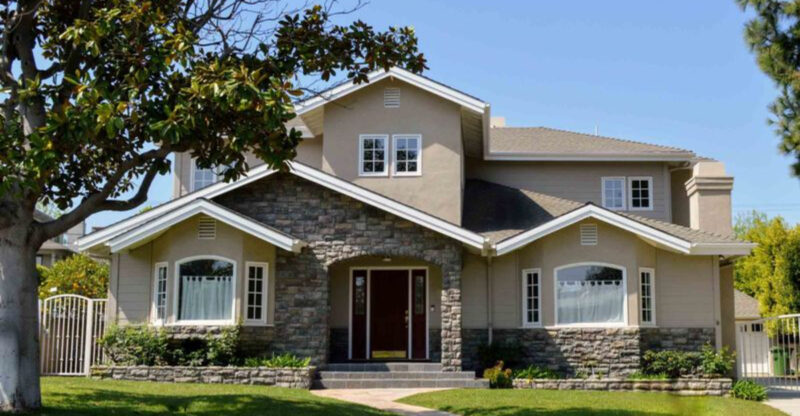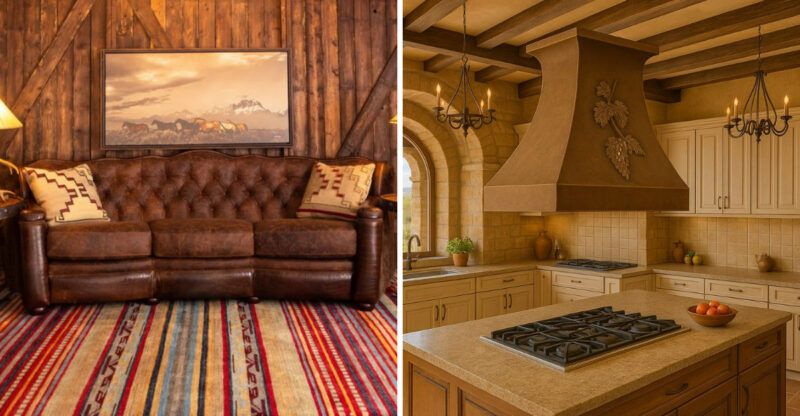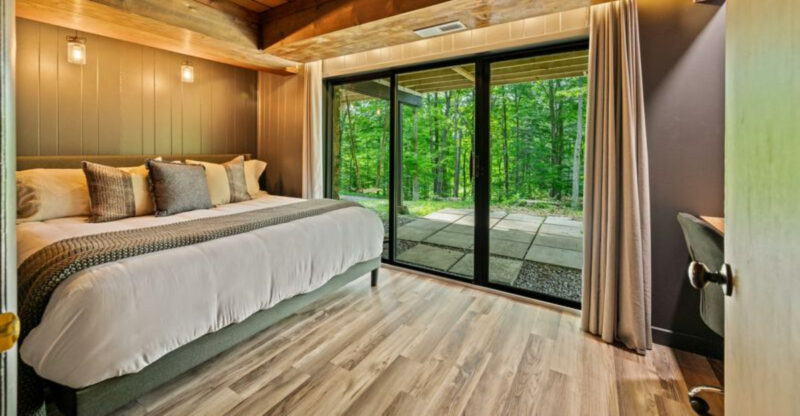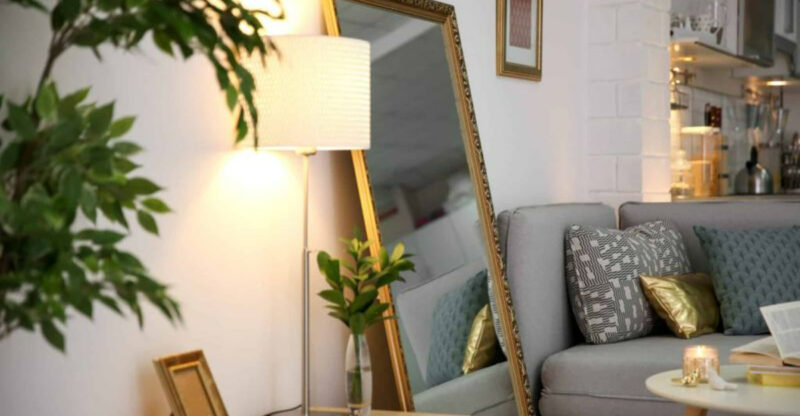Colorado Designers List 17 Home Trends That Are Losing Appeal
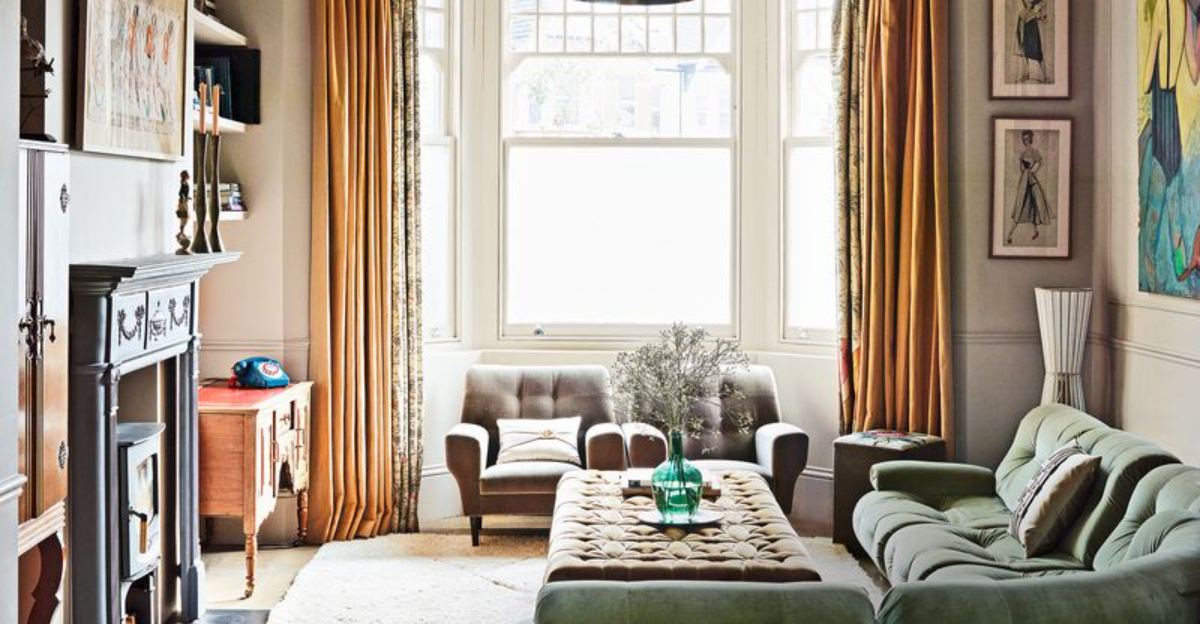
Home design trends come and go faster than Colorado weather changes. What was hot just a few years ago might now make potential buyers cringe or have your friends secretly judging your décor choices.
I’ve gathered insights from top Colorado designers who are seeing certain once-popular home features falling out of favor.
Ready to discover if your beloved home elements are still in style or heading toward design extinction?
1. Open-concept Layouts
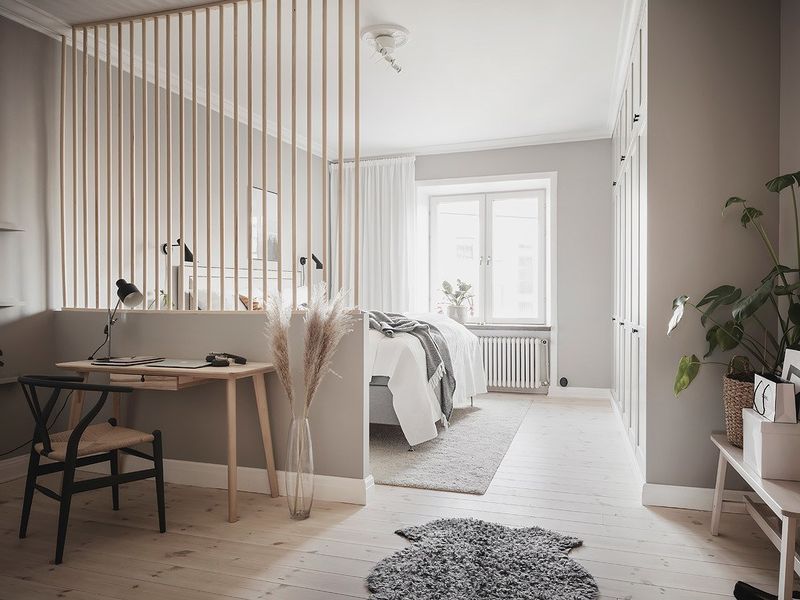
Privacy has made a comeback in Colorado homes! After years of knocking down walls, many families realize they actually need separate spaces. Working from home while kids attend virtual school taught us that sometimes walls are our friends.
Colorado designers note that clients increasingly request defined rooms with specific purposes. Kitchens that contain cooking smells, living rooms that hide clutter from dinner guests, and offices with doors that close are now priorities.
The pandemic shifted this perspective dramatically. While partial openness remains desirable, completely wall-free homes are losing appeal as residents crave separation between living activities. The trend now favors semi-open concepts with clever room dividers, sliding panels, or architectural elements that create visual breaks.
2. All-white Kitchens
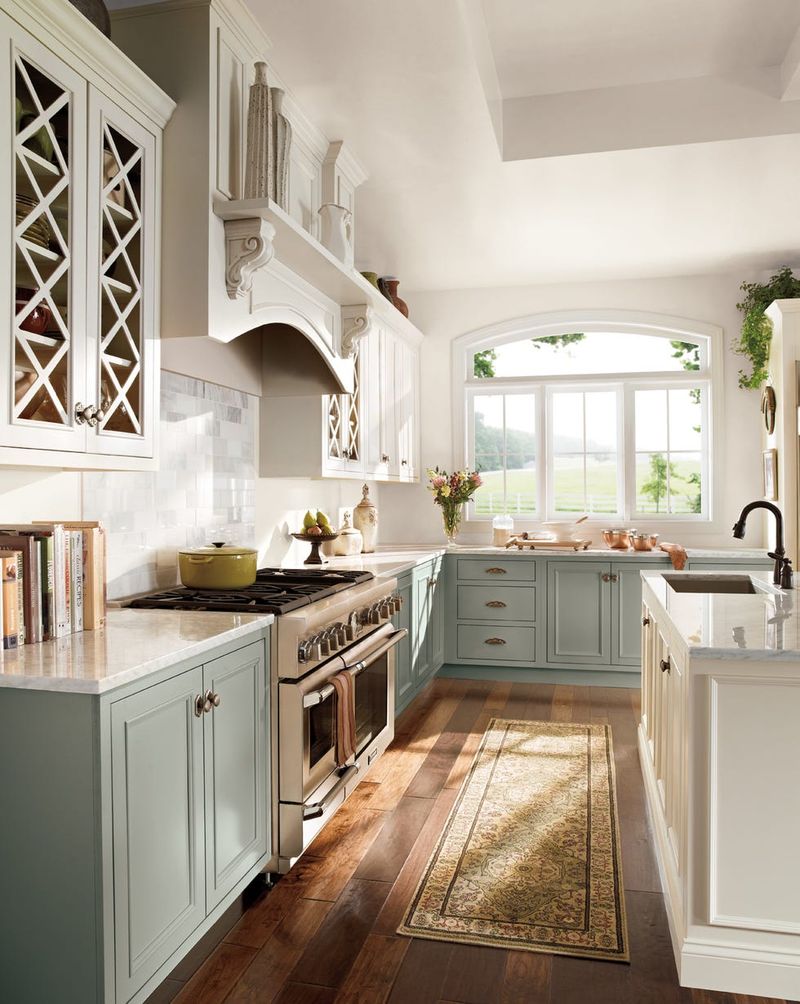
Stark, clinical all-white kitchens are fading from Colorado homes faster than snow in April. Designers report homeowners now crave warmth and personality in their cooking spaces. The sterile laboratory look that dominated Pinterest boards for years feels increasingly impersonal and high-maintenance.
Mountain state residents are embracing earthy tones, warm woods, and pops of color instead. Two-tone cabinets with darker bases and lighter uppers create visual interest while remaining timeless. Natural elements like wood open shelving or stone accents bring texture that all-white spaces lack.
Cleaning challenges also contribute to this shift. White shows every speck of dirt, coffee splash, and sauce splatter – something busy families have grown tired of maintaining. Colorful backsplashes and countertops hide everyday kitchen messes much better.
3. Subway Tile Backsplashes
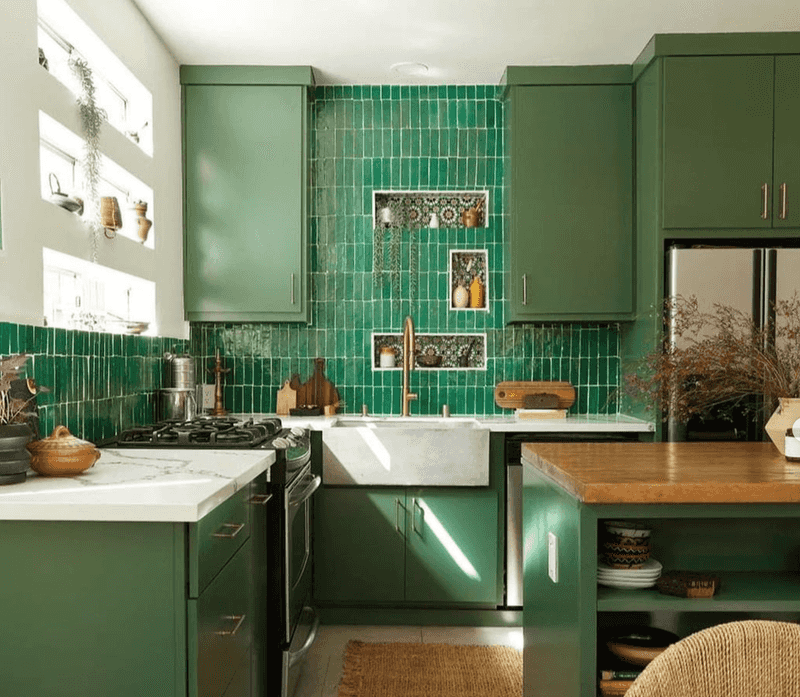
Those ubiquitous white rectangular tiles have reached saturation point in Colorado kitchens and bathrooms. Designers report clients specifically requesting “anything but subway tile” for their remodels. After dominating backsplashes for over a decade, this once-fresh look now reads as the default choice lacking imagination.
Homeowners are exploring more distinctive options like handmade zellige tiles with natural variations, geometric patterns, or larger format tiles that minimize grout lines. Colorful glass, textured ceramics, and natural stone are gaining popularity for their uniqueness and character.
Even those who appreciate subway tile’s classic appeal are choosing more interesting variations – elongated shapes, handcrafted finishes with irregular edges, or unexpected colors beyond basic white. The standard 3×6 white brick pattern installation, however, increasingly signals a dated renovation.
4. Barn-door Sliders

Barn doors are sliding out of fashion across Colorado homes. Once considered the perfect space-saving solution with rustic charm, these doors have become a victim of their own popularity. Designers note that what began as authentic farmhouse character has devolved into a mass-produced cliché.
Functionality issues contribute to their declining appeal. Many homeowners discovered barn doors provide minimal sound insulation and privacy, with gaps around edges allowing noise and light to pass through. They can also be noisy to operate, with hardware rattling against walls.
For spaces needing actual privacy (like bathrooms), Colorado designers now recommend pocket doors that disappear completely into walls. Where visual interest is desired, French doors or glass-paneled options offer elegance without the farmhouse cliché. Custom wood pivot doors are becoming the new statement piece for those wanting architectural impact.
5. Overly Ornate Crown Molding
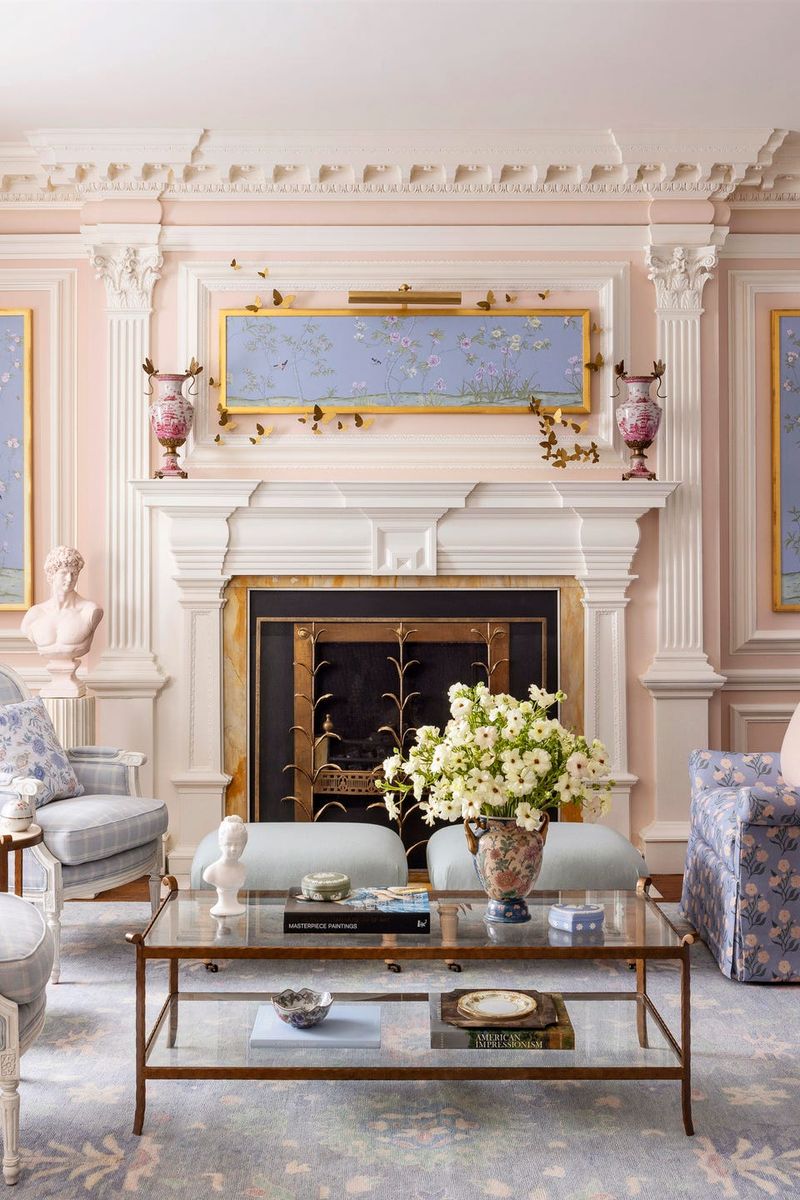
Heavy, ornate crown molding is losing its crown in Colorado homes. Design professionals report clients requesting simpler profiles that complement rather than dominate room aesthetics. The intricate, multi-layered Victorian-inspired moldings that once signaled luxury now feel fussy and dated.
Modern mountain homes favor cleaner lines that enhance architectural features without competing for attention. Simple, streamlined molding creates elegant transitions between walls and ceilings without overwhelming the space. In contemporary homes, some designers skip crown molding entirely, opting for minimalist shadow lines.
This shift reflects broader movement toward thoughtful simplicity in Colorado interiors. When molding is used, it’s chosen with intention rather than as a default “upgrade.” Many homeowners realize that elaborate trim elements can make spaces feel smaller and more cluttered, while simpler profiles create timeless elegance that won’t quickly date a renovation.
6. Granite Countertops
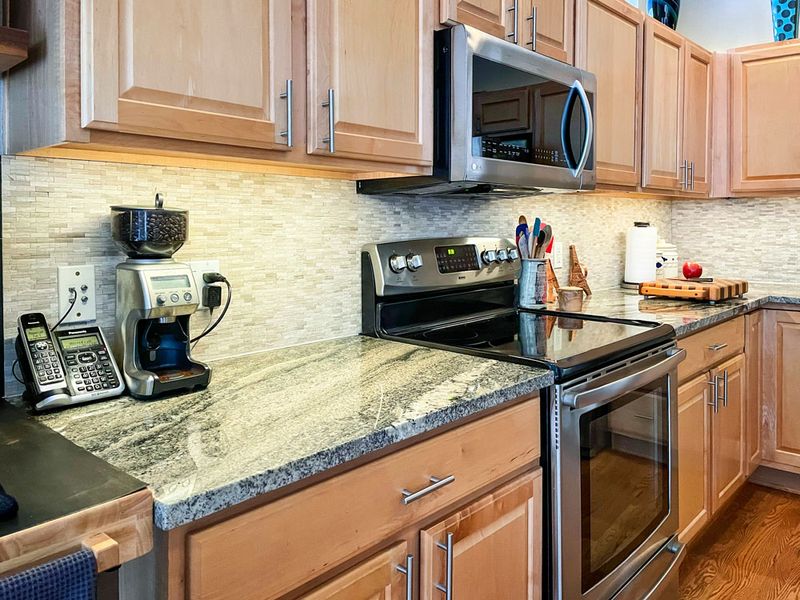
Granite’s reign as the king of countertops is ending in Colorado kitchens. Though once the gold standard of kitchen upgrades, these speckled stone surfaces now signal a dated renovation to many design professionals. The busy patterns and limited color palette that dominated 2000s homes have lost their appeal as tastes evolve.
Quartz has emerged as the preferred alternative, offering superior durability without requiring sealing. Its consistent patterning creates a cleaner aesthetic that complements contemporary designs. For mountain homes, soapstone and butcher block bring natural warmth and character that ages beautifully.
Even homeowners who appreciate natural stone are choosing alternatives like quartzite, which offers marble-like veining without granite’s characteristic speckles. When granite is selected, today’s buyers prefer subdued patterns and honed finishes rather than the glossy, multicolored versions that dominated the early 2000s.
7. Shiplap Walls
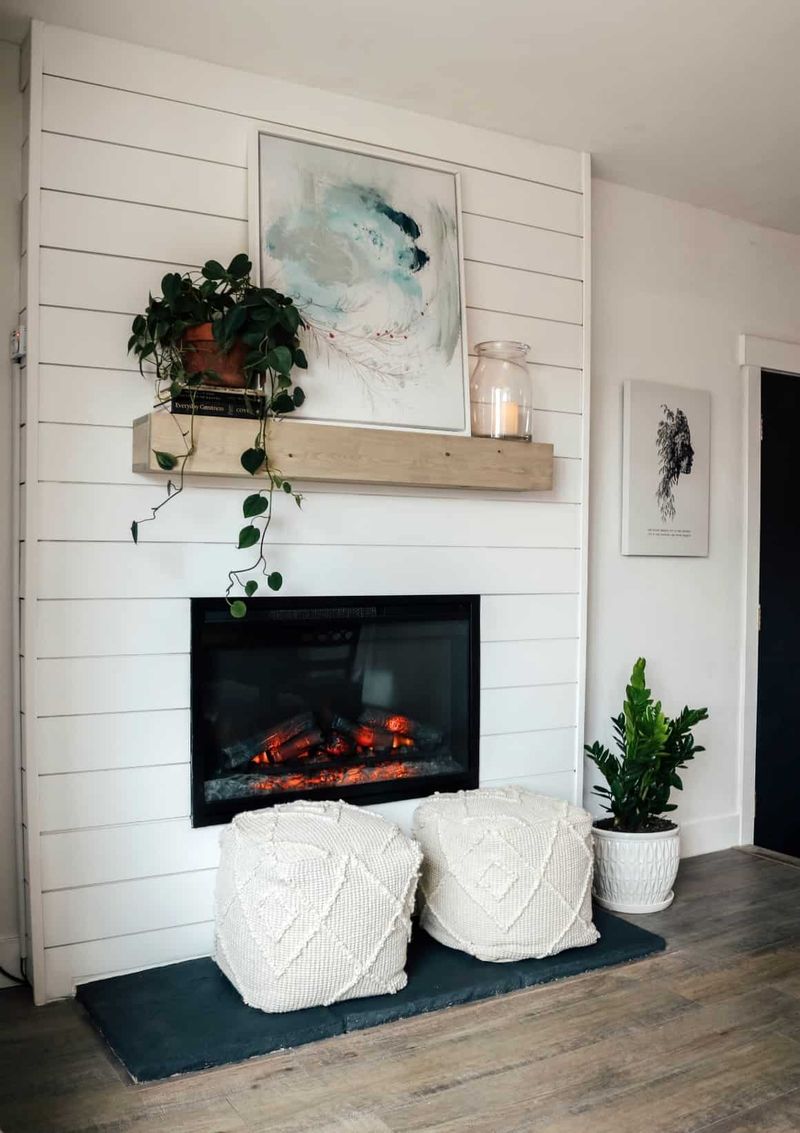
Shiplap has sailed past its prime in Colorado interior design. What began as an authentic architectural element in coastal and farmhouse buildings became massively overused thanks to popular TV renovation shows. Designers report clients specifically requesting “no shiplap” in their remodels.
The horizontal wooden planking that seemed fresh and charming five years ago now reads as a trendy choice that instantly dates a space. Colorado homes are embracing more timeless wall treatments or those with regional relevance like adobe-inspired finishes or natural stone that connects to the mountain landscape.
When texture is desired, designers recommend more subtle alternatives like vertical tongue-and-groove paneling, textured plaster, or thoughtfully placed wood accents that won’t feel dated in a few years. The all-over shiplap look, particularly in white, has become shorthand for “renovation circa 2018” rather than timeless design.
8. Exposed Beams
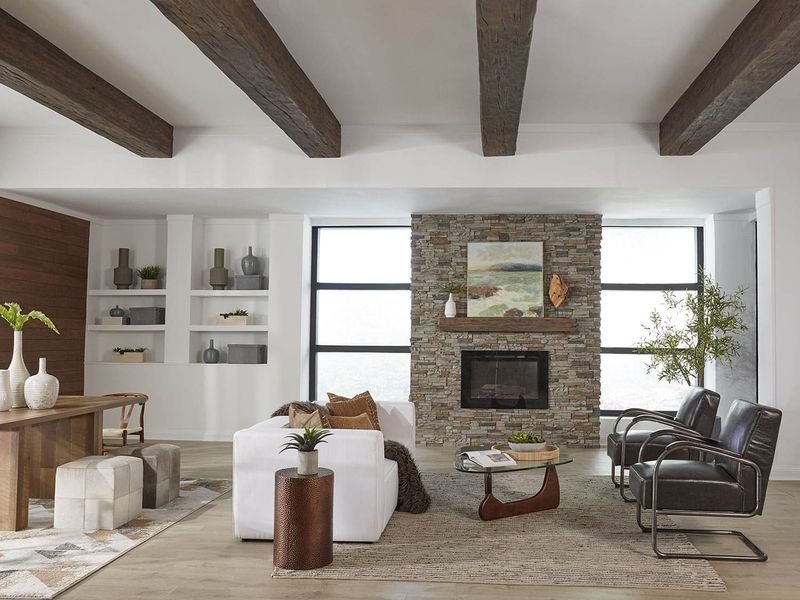
Fake exposed beams are losing structural support in Colorado design circles. While authentic structural beams remain desirable, the hollow decorative versions added solely for rustic appeal are falling from favor. Designers note that these faux features often look obviously inauthentic, especially when made from lightweight materials that couldn’t possibly support anything.
Homeowners increasingly prefer genuine architectural elements or none at all. In mountain homes where timber construction makes sense, real structural beams remain popular. However, the practice of adding decorative beams to standard-height suburban ceilings typically creates proportion problems rather than character.
When ceiling interest is desired, Colorado designers now recommend more contemporary approaches like subtle coffered details or carefully considered lighting designs. The key distinction: architectural elements should make sense for the home’s actual structure and style rather than being applied as trendy decorative afterthoughts.
9. Brass Fixtures
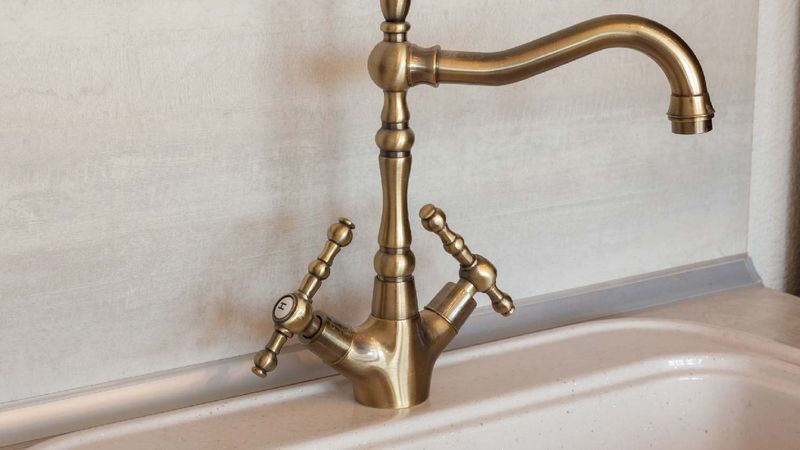
The shiny brass fixtures that dominated Colorado bathrooms and kitchens in recent years are losing their luster. Designers report that the bright yellow-gold finishes that felt fresh and modern when they replaced nickel and chrome now themselves feel trendy rather than timeless.
More subtle metal finishes are taking center stage. Warm bronze, blackened steel, and brushed nickel offer staying power that polished brass lacks. When brass is used, it’s now selected in aged or hand-rubbed finishes that develop natural patina rather than maintaining a perfect shine.
This shift reflects broader movement toward authenticity in home materials. Fixtures that show natural wear and develop character over time connect with Colorado’s appreciation for genuine craftsmanship. The highly polished, lacquered brass that won’t change appearance has become a hallmark of trend-chasing rather than enduring design.
10. Dark Stained Wood Floors
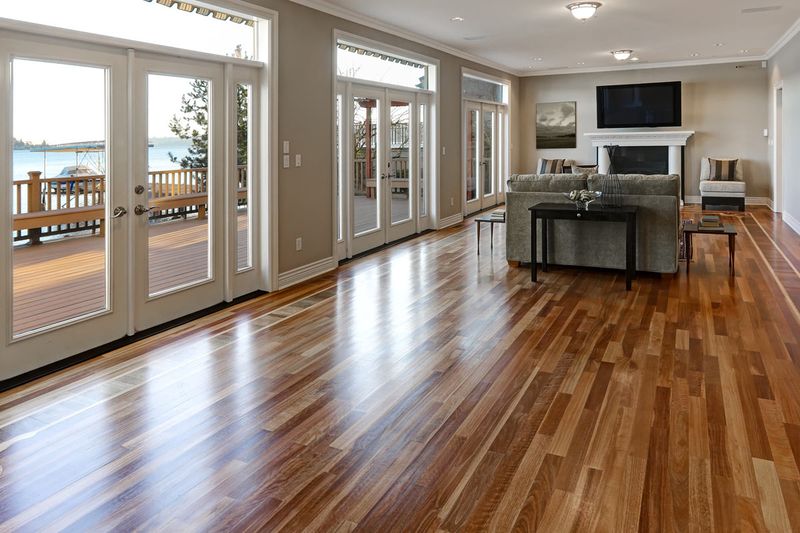
Nearly black wood floors are fading into the shadows in Colorado homes. These ultra-dark stains that dominated high-end renovations for years have fallen from favor as homeowners discover their practical drawbacks. Every dust particle, pet hair, and footprint shows dramatically on these dark surfaces, creating constant cleaning challenges.
Mountain state designers now recommend medium-tone woods that better complement Colorado’s natural aesthetic. These warmer hues connect indoor spaces with the surrounding landscape while hiding everyday dirt. Lighter floors also make spaces feel larger and more open – particularly important in mountain homes where natural light may be limited.
When clients want dramatic flooring, designers suggest natural variations like white oak with character grade knots and grain patterns rather than uniform dark stains. The shift emphasizes authentic wood characteristics instead of trying to make every species look like ebony through heavy staining.
11. Formal Dining Rooms

Dedicated dining rooms are being served their last course in Colorado homes. These seldom-used formal spaces increasingly feel like wasted square footage to practical mountain state residents. Designers report many clients specifically requesting floor plans that repurpose traditional dining rooms into more functional spaces.
Home offices, homework stations, craft areas, or multipurpose rooms that can adapt to different needs have replaced rooms dedicated solely to occasional fancy meals. When dining space is included, it’s typically integrated into kitchen areas with comfortable, casual seating rather than isolated behind walls.
This trend accelerated during the pandemic when homes needed to accommodate multiple activities simultaneously. Even in luxury homes, Colorado buyers now prefer flexible spaces over rarely-used formal rooms. The exception: properties specifically designed for frequent entertaining, where separate dining spaces still serve a practical purpose.
12. Built-in Entertainment Centers
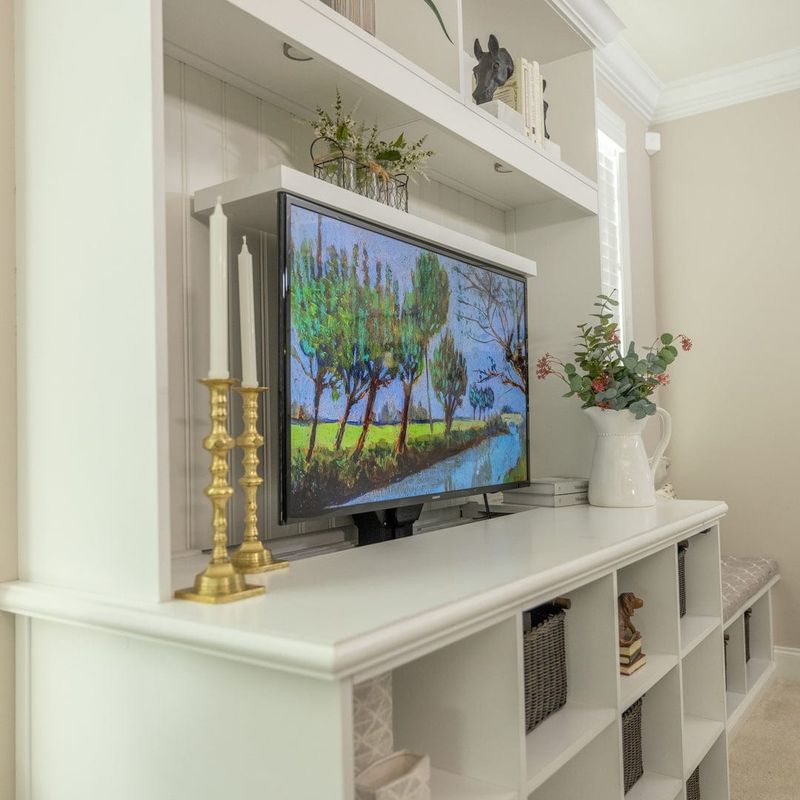
Massive built-in entertainment centers designed specifically for outdated technology are disconnecting from Colorado design trends. Those wall-dominating units created for bulky tube TVs and extensive DVD collections now feel like relics from another era. Designers report clients specifically requesting removal of these custom-built monuments to obsolete electronics.
Modern flat screens no longer require deep cabinets, while streaming services have eliminated the need for extensive media storage. When built-ins are desired, they’re now designed with flexibility to accommodate changing technology and display personal items rather than equipment.
Homeowners increasingly prefer simple media consoles or wall-mounted televisions that don’t permanently alter room architecture. This approach allows easier updates as technology evolves and prevents homes from being visually anchored to a specific era. The most forward-thinking Colorado designers now plan for technology integration that remains invisible rather than becoming the room’s focal point.
13. Popcorn Ceilings
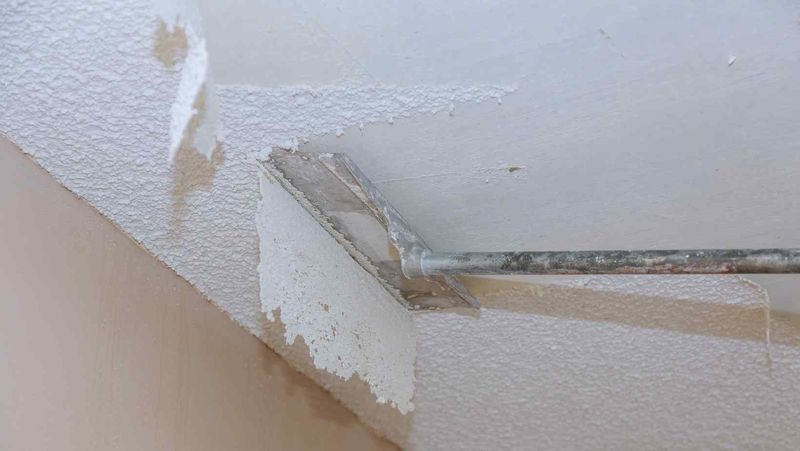
Popcorn ceilings continue their decades-long fall from grace in Colorado homes. These textured surfaces, originally installed to hide imperfections and reduce noise, now scream “outdated” to designers and homeowners alike. Beyond their dated appearance, these ceilings collect dust, are difficult to clean, and often contain asbestos in older homes.
Smooth ceilings create a cleaner, more modern aesthetic that makes rooms feel larger and more refined. When texture is desired for acoustic purposes, more subtle techniques like skip trowel finishing provide character without the dated popcorn look.
Removing this ceiling treatment tops many Colorado renovation lists, though the process can be messy and potentially hazardous if asbestos is present. Professional testing and removal is recommended for homes built before the 1980s. The dramatic before-and-after effect of popcorn removal makes it one of the most visually impactful updates for older Colorado homes.
14. Matchy-matchy Furniture Sets
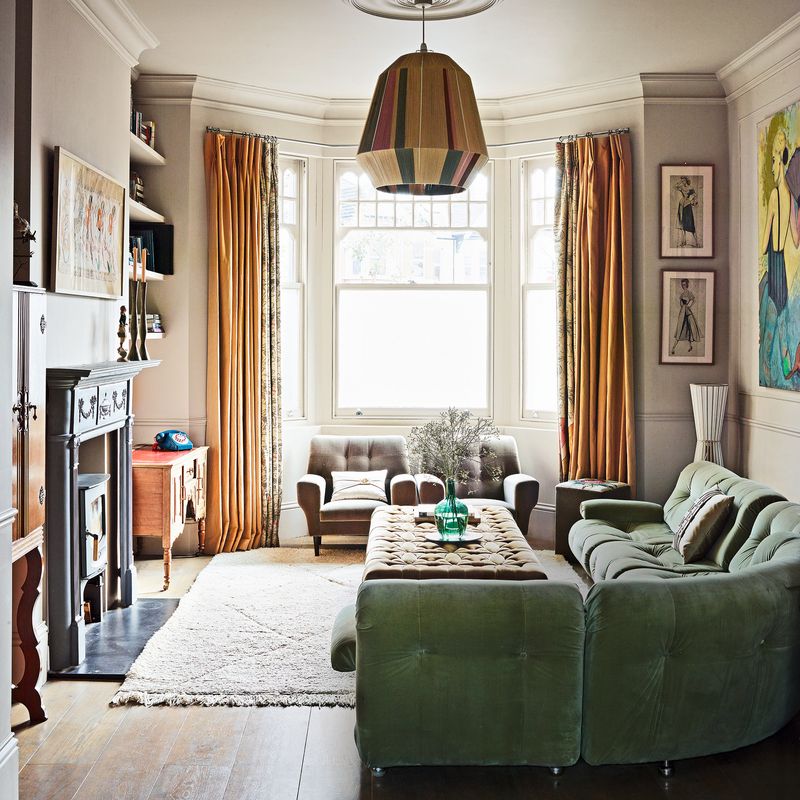
Purchasing entire furniture collections in identical finishes is a fading tradition in Colorado homes. These perfectly coordinated bedroom and living room suites that once signaled good taste now read as unimaginative and impersonal to design professionals. The catalog showroom look lacks the character that defines thoughtful mountain state interiors.
Today’s approach favors curated collections that tell personal stories. Mixing complementary pieces from different sources, eras, and styles creates more interesting, authentic spaces. Designers recommend anchoring rooms with quality foundational pieces, then adding distinctive elements that reflect personal interests and experiences.
This shift embraces Colorado’s independent spirit and appreciation for craftsmanship. Rooms evolve organically rather than arriving fully formed from a single manufacturer. Even when working with one furniture brand, designers now mix different collections and finishes to create spaces that feel collected over time rather than purchased in a single afternoon.
15. Heavy Velvet Draperies
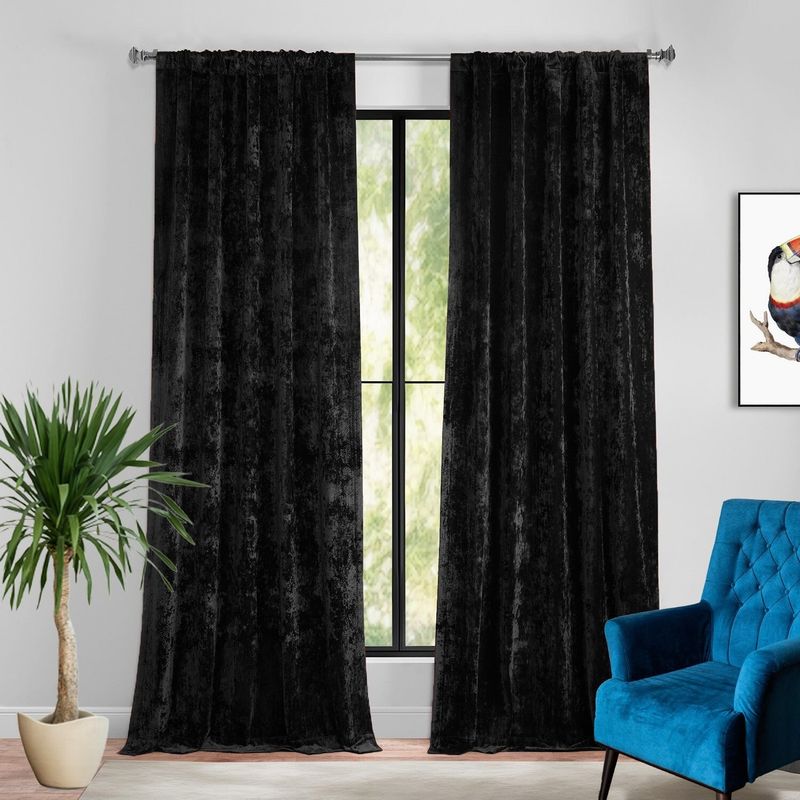
Weighty, ornate window treatments are being drawn closed for good in Colorado homes. Those floor-to-ceiling velvet drapes with tasseled tiebacks and heavy valances that once signaled luxury now feel fussy and outdated. They also block precious natural light and mountain views that Colorado residents treasure.
Modern window treatments favor simplicity and function over decorative excess. Designers recommend lighter fabrics that filter light beautifully while maintaining privacy. When blackout capabilities are needed (especially important in bedrooms at higher elevations where summer days are long), hidden roller shades provide functionality without visual heaviness.
The shift emphasizes connection to Colorado’s stunning outdoor environments rather than formal interior decoration. Window treatments now frame views instead of hiding them. Even in traditional homes, simpler pleated panels without elaborate swags and jabots create timeless elegance that won’t quickly date a space.
16. Wallpapered Accent Walls
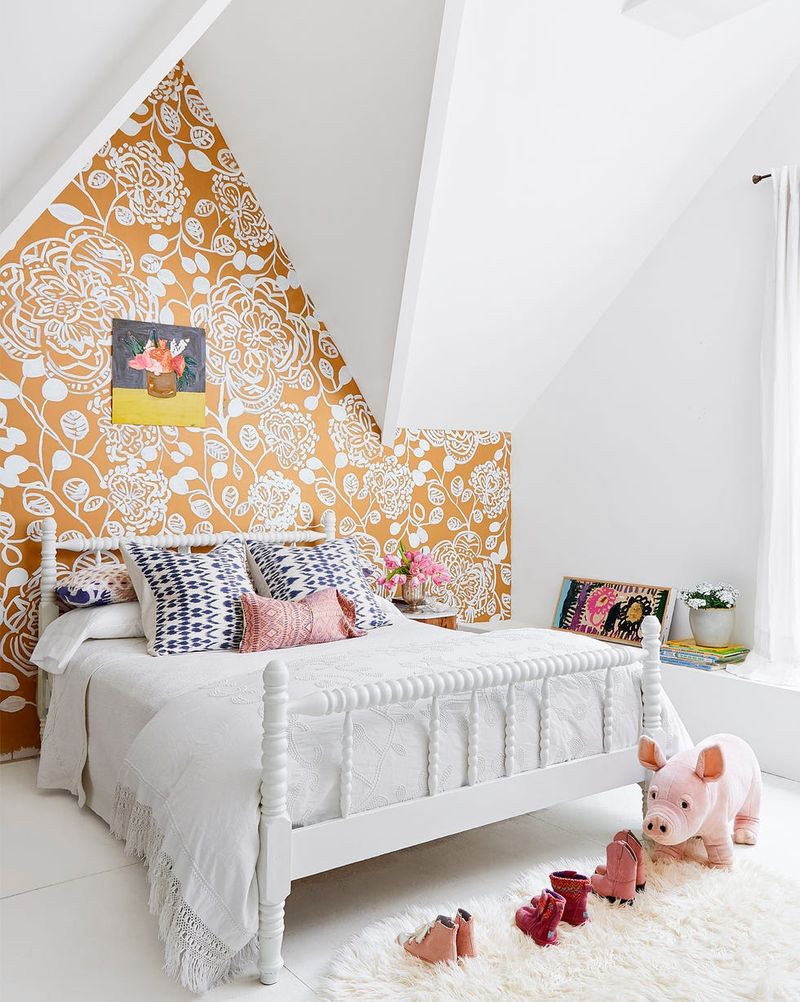
Single wallpapered accent walls are losing their place in Colorado design conversations. This once-popular compromise between blank walls and fully papered rooms now feels like a half-hearted design decision rather than a bold choice. Designers note that these lonely papered walls often look disconnected from the overall room concept.
When wallpaper is used in contemporary mountain homes, it’s either applied with more commitment (multiple walls or entire rooms) or in unexpected places like ceilings, inside bookcases, or within architectural niches. The key is purposeful installation rather than the tentative “just one wall” approach.
This shift reflects growing confidence in Colorado interior design. Homeowners are embracing either fully painted rooms with architectural interest or making stronger statements with wallpaper throughout spaces. The middle-ground accent wall – particularly behind beds or in dining rooms – has become a hallmark of trend-following rather than thoughtful design.
17. Wall-to-wall Carpeting
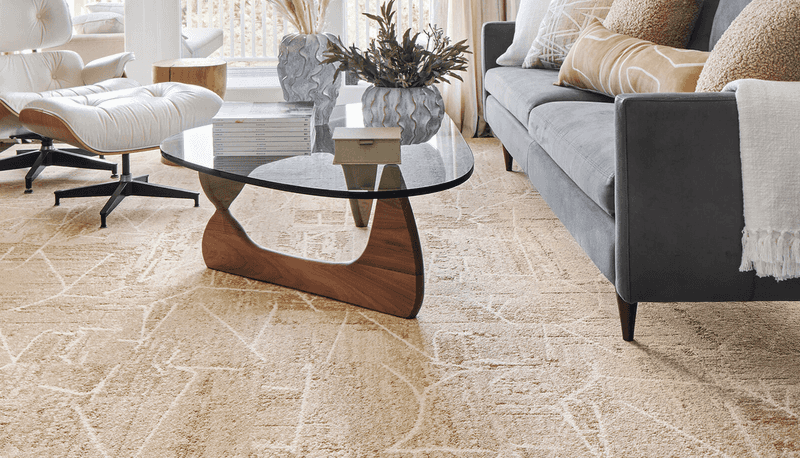
Wall-to-wall carpeting is being rolled up across Colorado homes. Once considered the comfortable, practical flooring solution, these vast expanses of carpet have fallen from favor as homeowners discover more appealing alternatives. Designers note that carpeting throughout main living areas dates homes instantly and can deter potential buyers.
Hard surface flooring like hardwood, luxury vinyl plank, or tile now dominates main living spaces, offering easier cleaning and better longevity. When warmth and comfort are desired, area rugs provide the same benefits while adding visual interest and flexibility to change with evolving tastes.
Carpeting hasn’t disappeared entirely from Colorado homes – it still makes sense in bedrooms and basement areas where comfort underfoot is prioritized. However, the practice of carpeting entire homes, including kitchens and dining areas, has become a definite design don’t. Today’s approach uses appropriate flooring materials for each area’s specific needs and activities.

